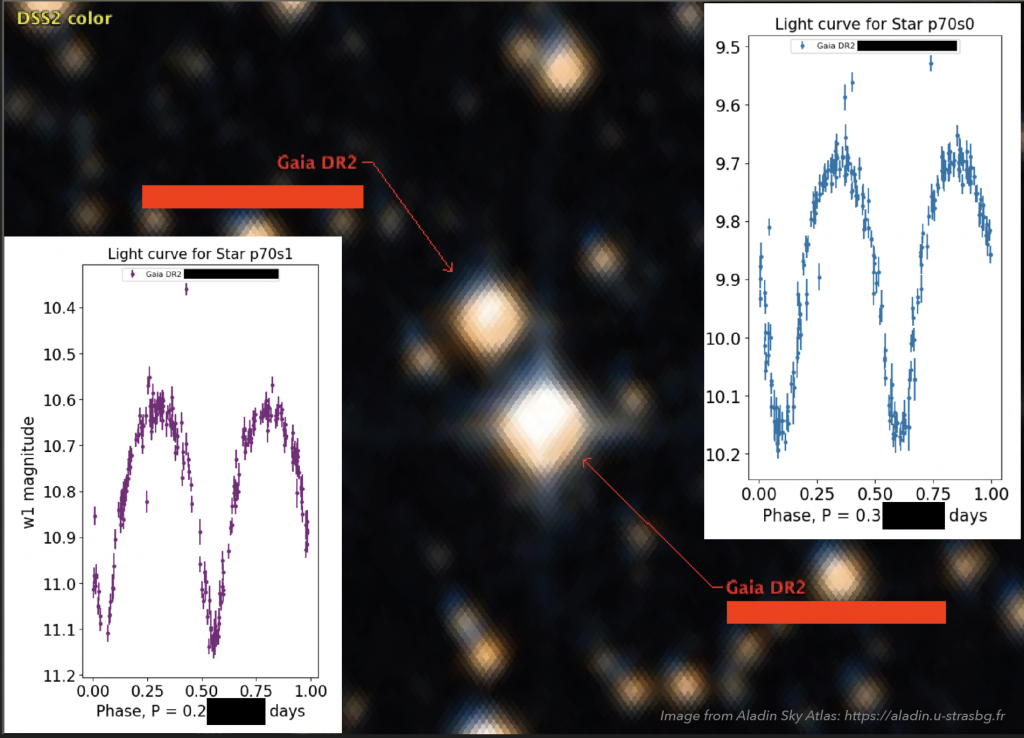Despite the challenges of the remote mode, we have had a very successful program of Summer 2020 undergraduate research! We thank NASA and Space@Hopkins for timely support of the summer 2020 research program on a short notice, and we were grateful for the opportunity to present the results of our program to NASA Headquarters.

Mansha Kapur (advisors: Hsiang-Chih Hwang, Nadia Zakamska) worked on identifying companions to neutron stars in the Gaia dataset.
Gavin Fezenko (advisors: Hsiang-Chih Hwang, Nadia Zakamska) worked on identifying quadruple stellar systems consisting of two very close binaries.
Devon Williams (advisors: Caroline Huang, Nadia Zakamska) modeled spatially resolved spectroscopy of galaxies obtained using the integral-field unit technique.
Kyle Schneider (advisors: David Nataf, Nadia Zakamska) investigated light curves of Mira variables and identified Mira stars associated with Galactic globular clusters.
Carsten Langholm (advisors: Hsiang-Chih Hwang, Nadia Zakamska) explored modern computational methods for measuring periods and period changes from the light curves of periodic objects.
Brandon Stride (advisors: Hsiang-Chih Hwang, Nadia Zakamska) investigated variable young stellar objects — `dippers’ — and the wavelength dependence of their variability to constrain the physical properties of the protostellar disks.
Matt Kleiman (advisors: Hsiang-Chih Hwang, Nadia Zakamska) looked for young eclipsing binaries — those that still have protostellar material surrounding the binary.
Felix Yu (advisors: Vedant Chandra, Nadia Zakamska) explored modern computational methods for analyzing spectra of white dwarfs, especially for identifying interesting and unusual objects.
John Magardino (advisors: Vedant Chandra, Nadia Zakamska) investigated magnetic white dwarfs and analyzed their atmospheric absorption features to measure the strength of the Zeeman effect.
Evan Petrosky and Vedant Chandra continued their projects from Summer 2019 with Nadia Zakamska and Hsiang-Chih Hwang. Vedant Chandra has published two papers on his research so far: “Computational tools for spectroscopic analysis of white dwarfs” and “A gravitational redshift measurement of the white dwarf equation of state.” The second paper was highlighted in the JHU HUB article and in Science News.
IDIES Summer Fellowship recipient Vedant Chandra (advisor Kevin Schlaufman) used machine learning to differentiate between cool white dwarfs and metal-poor main sequence stars and then conducted a search for low-mass Population III stars in the Sloan Digital Sky Survey.
Turner Woody (advisor Kevin Schlaufman) calculated the orbits of the Milky Way’s globular clusters and used those data in concert with literature age and metallicity inferences to construct a more general model for the assembly of massive galaxies’ globular cluster systems.
Summer Talk Series for Undergraduate Interns (organized jointly with Carolyn Slivinski at STScI)
June 4 – Raja GuhaThakurta (STScI/UCSC) “Galaxies, Black Holes, and Schrödinger’s Cat”
June 9 – Katey Alatalo (STScI) “Astronomy Allies”
June 11 – Erini Lambrides (JHU) “Why You Should Care About Growing Supermassive Black Holes”
June 16 – Kevin Schlaufman (JHU) “Exoplanets and Planet Formation”
June 18 – Serge Dieterich (STScI) “Low Mass Stars and Brown Dwarfs”
June 23 – Max Mutchler (STScI) “Strange comets: Borisov, Atlas, and active asteroids”
June 25 – Joshua Lothringer (JHU) “Exoplanets and Their Atmospheres”
June 30 – Quyen Hart (STScI) “Communicating Science”
July 2 – Bill Blair (JHU/STScI) “JWST: The Next NASA Great Observatory”
July 7 – Rachel Osten (STScI/JHU) “Why We Need to Understand Stars to Find the Next Earth”
July 9 – Joel Green (STScI) “Shadows in Space! The violent early days of a new star system”
July 14 – Emanuele Berti (JHU) “Black Holes and Gravitational Waves”
July 16 – Laura Watkins (STScI) “The Lifecycle of a Hubble Proposal”
July 21 – Mitchell Revalski (STScI) “How Do Supermassive Black Hole Winds Affect Galaxy Evolution?”
July 23 – Lou Strolger (STScI) “High Redshift Supernovae: Beyond The Epoch of Dark Energy”
July 28 – Kip Kuntz (JHU) “X-ray Unique Science: Foregrounds, Backgrounds, and the In-Between”
